Agenda
Note: Subject to change.
Tuesday, May 6, 2025
9:00 am - 5:00 pm
Co-located EPRI Infrastructure Working Council (IWC) Meeting and Joint VGIC-SEPA Utility Collaboration Forum
A full day of presentations and panel sessions focusing on assets of the grid, including EV charging using stationary battery storage, managing EV as load, and V1G
> View agenda
5:00 - 6:30 pm
Networking Reception
Wednesday, May 7, 2025
8:00 - 9:00 am
Welcome Continental Breakfast & Coffee
9:00 - 9:30 am
Opening Keynote Address
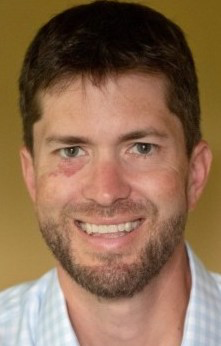
Mike Delaney
Vice President, Utility Partnerships & Innovation
Pacific Gas and Electric
profile
9:30 - 10:30 am
Best Practices and Lessons Learned from V2G Deployments: Key Stakeholders Report on the Customer Experience
For V2G to scale, the customer experience must be seamless and simple. Although V2G is a nascent technology and customer adoption is still relatively small-scale, there is much we can learn from the limited pilots that have taken place across the country. It is imperative that utilities, EV OEMS, VGI service providers, and regulators learn from these experiences to improve the customer experience and to realize the full potential that V2G with bidirectional charging can provide. What can we learn from some of the earliest adopters of bidirectional charging technology? How can these learnings help V2G scale?
This panel session will explore the following questions:
- What motivated your fleet/business to choose V2G technology?
- According to customers, what are the biggest challenges to deploying V2G charging technology? Is it interconnection, accessing Make Ready and other incentive funding, or something else entirely?
- What do customers feel is needed to make the business case work? Are there enough rates, programs, and compensation for V2G services?
- What is the role of industry partners and VGI services providers in working with customers to deploy this technology?
- What can utilities do differently to help make the customer experience more seamless?
- Discuss lessons learned from real-world deployments

Chair
Anna Bella Korbatov
Director of Regulatory Affairs
Fermata Energy
profile

Nick Fiore
Clean Transportation Innovation Manager
SDG&E
profile
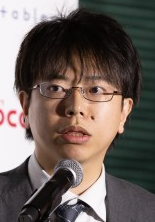
Yoshinori Suzue
Senior Manager
Nissan North America
profile
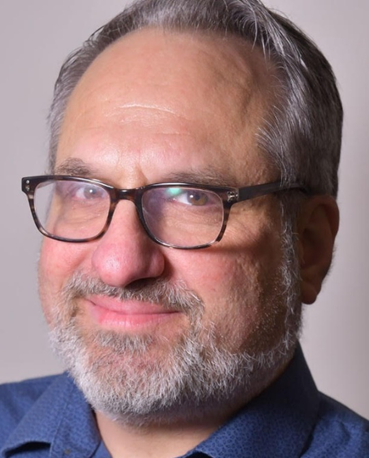
Rudi Halbright
Expert Product Manager, Vehicle Grid Integration
Pacific Gas & Electric
profile
10:30 - 11:00 am
Networking Coffee Break
11:00 am - 12:15 pm
California Energy Commission VGI Update, Perspectives on V2G, and Status of Projects in Motion
The recently passed California Senate Bill 59 would require any weight class of battery electric vehicle to be bidirectional capable, as defined, if it is determined that there is a sufficiently compelling beneficial bidirectional-capable use case to the BEV operator and electrical grid. This session looks at current California Energy Commission activities related to SB 59 and V1G in general, as well as the current status of V2G initiatives in the state.

Chair
Brittany Blair
Senior Analyst, Research & Industry Strategy
Smart Electric Power Alliance
profile
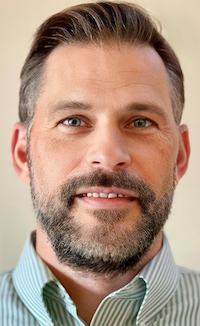
Vincent Weyl
Vehicle-Grid Integration Principal, Fuels and Transportation Division
California Energy Commission
profile
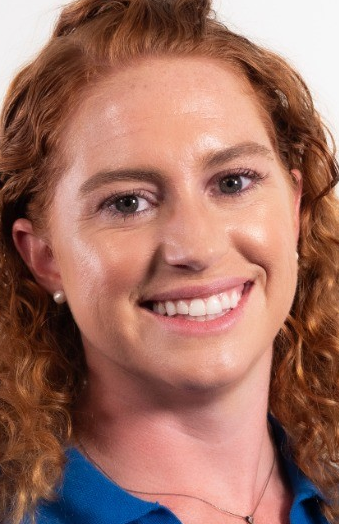
Sydney Hodges
Client Program Manager
WeaveGrid
profile
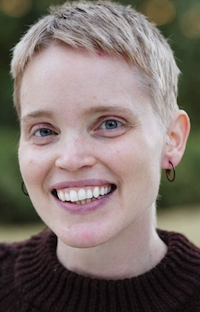
Frances Bell
Co-founder and CEO
Bidirectional Charging
profile
12:15 - 1:15 pm
Lunch Break
1:15 - 1:30 pm
Achieving V2G Interoperability Internationally: An Update on Task 53
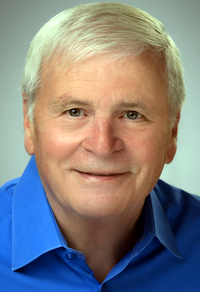
Bjoern Christensen
Task 53 NA Representative
(Interoperability of Bidirectional Charging), IEA
CEO, Next-Dimension
profile
1:30 - 2:15 pm
Attendee Brainstorming Session
Small-group discussions of key topics, challenges and opportunities regarding V2G and vehicle-grid integration
2:15 - 2:30 pm
Brainstorming Report-Out
Sharing of insights from each group with the assembled attendees for further discussion and refinement
2:30 - 3:00 pm
Networking Coffee Break
----------------------------------------------
TRACK A
3:00 - 4:15 pm
Pioneering Commercial Vehicle-To-Grid In Electric School Buses
This session will explore how V2G technology is transforming the electrification of school buses into a dynamic opportunity to support grid resilience, reduce costs, and accelerate fleet electrification. Panelists will discuss real-world implementations, technical challenges, where we see V2G heading, and frameworks needed to scale V2G to widespread adoption. Attendees will leave with actionable insights into how electric school buses can be both sustainable transportation solutions and active participants in the energy ecosystem.
Key Takeaways:
- V2G Impact in Action: How electric school buses are supporting grid resilience and energy optimization during peak demand
- Scaling V2G Deployments: Key technical, operational, and policy considerations for scaling V2G projects in school districts
- Economic Benefits: How V2G can reduce costs for districts while generating additional revenue
- Collaboration and Innovation: The critical role of partnerships between utilities, school districts, and technology providers in advancing V2G adoption

Moderator
Shana Patadia
Head of Business Development
Synop
profile

Mamadou Diong
Manager, Electric Distribution Grid Planning
Dominion
profile

Anuj Yadav
Senior Consultant/Project Lead Commercial Charging
Thomas Built Buses
profile

Leah Brams
Market Development Manager
Highland Electric Fleets
profile

Keyur Shah
Senior Manager, Global Charger Controls and Software
Heliox
profile

Tyler Davis
Director of Engineering
Synop
profile
----------------------------------------------
TRACK B
3:00 - 3:45 pm
Implementing Large-Scale V2G Programs: Learnings from the MassCEC V2X Demonstration Project
As V2G moves from early pilots to larger programs and scale, new challenges arise including customer enrollment, customer education and program enrollment. This session shares experience from the MassCEC V2X Demonstration project that includes 100 V2G systems across residential, commercial and school bus segments. Learnings include product and program design, criteria for eligible customers, and customer enrollment. The limited selection of bidirectional vehicles and charging stations on the market requires program administrators to invest in customer education and other strategies to guide customers through a confusing technical landscape.
Regional and state-wide programs also cross multiple utility service territories that have different rules for interconnection, including different rules for residential and commercial vehicles. The session will also cover how compensation mechanisms differ for residential and commercial customers across different service territories and strategies on how to educate customers of these differences within a large scale deployment.
Key Takeaways:
- Customer recruitment strategies for V2G
- Educating customers on V2G value streams and understanding tradeoffs
- Customer enrollment based on vehicle interoperability challenges
- Managing interconnection across service territories

Katie Peterson
Project Implementation and Strategy Lead
The Mobility House
profile

Kelly Helfrich
Vice President, Transportation Electrification
Resource Innovations
profile
3:45 - 4:15 pm
An Update on Bidirectional Charging Projects in REDWDS
The Lawrence Berkeley National Laboratory (LBNL) has been leading a $16M CEC funded RDD&D project, CalFlexHub (EPC-20-025) developing and demonstrating price-responsive technologies across building sectors and EV charging to deliver demand flexibility. Southern California Edison is a cost share partner to the CalFlexHub project and has funded LBNL to track developments and technical details in the CEC Clean Transportation Program funded "REDWDS" field demonstration and deployment projects.
Three out of the ten REDWDS projects have significant bidirectional charging scope led by Bidirectional Energy, dcbel and Kaluza. LBNL is working with these three bidirectional charging technology providers to document their use cases, approaches to communicate grid and price signals, charging control and optimization, customer experience, and interoperability features in their REDWDS projects. This session will present an update on these projects, covering the above aspects and sharing any insights on bidirectional charging-related challenges these projects encounter.

Jingjing Liu
Program Manager / Technology Researcher III
Lawrence Berkeley National Lab
profile
4:15 - 5:30 pm
Site Tour of PG&E's Advanced Technology Performance Lab (ATPL) within the Applied Technology Services (ATS) facility
5:30 - 7:00 pm
Networking Reception
Thursday, May 8, 2025
8:00 - 9:00 am
Welcome Coffee and Continental Breakfast
9:00 - 9:30 am
Opening Address Session

Lynn Ames
Head of Utility, Fleet and Commercial Business Development
General Motors
profile
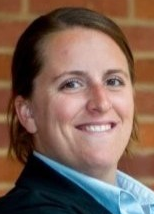
Lydia Krefta
Director, Clean Energy Transportation
Pacific Gas and Electric
profile
9:30 - 10:30 am
Compensation Mechanisms for Customers
The value of exported energy from V2G scenarios is a topic of focus and action for utilities. This session looks at models and potential strategies for compensating fleets, businesses and residential customers for V2G participation. The desire is to move past one-off pilots to "scaled pilots" in a deliberate fashion over time, so as to establish utility confidence. This panel will explore issues surrounding compensation mechanisms with an eye toward moving forward proactively and positively for all parties involved.
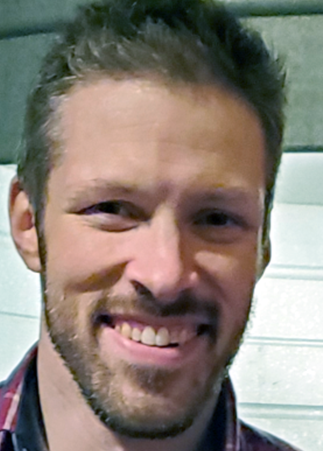
Chair
Blake Heidenreich
Strategic Advisor, Transportation Electrification
Southern California Edison
profile

Eric Cutter
Partner
E3
profile

Ahmad Faruqui
Independent Economist and Consultant
profile

Kate Peters
Energy Research Associate
The Brattle Group
profile
10:30 - 11:00 am
Networking Coffee Break
11:00 am - 12:15 pm
Interconnection Processes
The interconnection process for V2G systems faces significant challenges, including lengthy permitting timelines, inconsistent utility requirements, and outdated grid infrastructure that was not designed for bidirectional energy flows. Regulatory bottlenecks and a lack of standardized interconnection procedures create delays and add costs for V2G project developers. Additionally, utilities often struggle to assess the impact of aggregated EV exports on grid stability, leading to conservative interconnection policies that hinder scalability. This panel examines these barriers and how best to address them effectively across service jurisdictions.

Chair
Zach Woogen
Executive Director
Vehicle-Grid Integration Council
profile
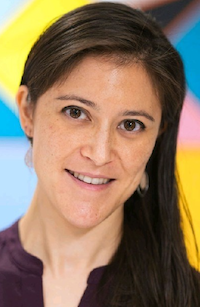
Kristin Landry
Expert Product Manager, Vehicle-Grid Integration
Pacific Gas and Electric
profile

Anna Bella Korbatov
Director of Regulatory Affairs
Fermata Energy
profile
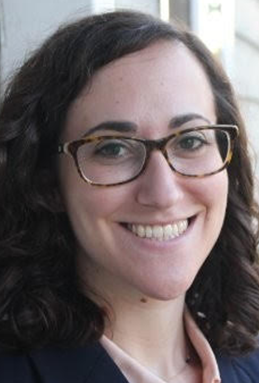
Michelle Bogen
Project Manager, Grid Services
Ford Motor Company
profile
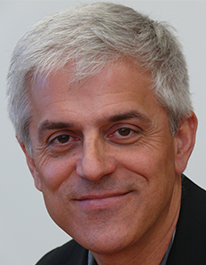
Steve Griffith
Executive Director, Regulatory & Industry Affairs, Mobility
NEMA
profile
12:15 - 1:15 pm
Lunch Break
12:15 - 1:15 pm
CA VGI Policy Working Group Lunch

Facillitator
Kurt Johnson
Community Energy Resilience Director
The Climate Center
profile
1:15 - 2:15 pm
V2G and Next-Generation Metering: Submetering and Measuring Devices for Compensation
This session looks at the process of applying submetering to settlements within the context of V2G. Topics to be addressed include:
- Providing uniform data in an environment of diverse equipment and legacy grid infrastructure struggle
- The need for high-resolution data to capture rapid charging and discharging events
- Addressing concerns about data reliability, cybersecurity, and privacy
- Integrating submetering technology into existing regulatory and utility frameworks
- Why are we where we are today? Addressing the need for revenue-grade (vs non-revenue grade) metering

Chair
John Holmes
Senior Principal Energy Advisor
American Honda Motor Co., Inc.
profile
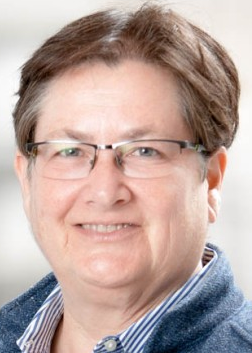
Nancy Ryan
Partner
eMobility Advisors
profile

Dan Fletcher
Founder and Head of Ecosystems
dcbel
profile
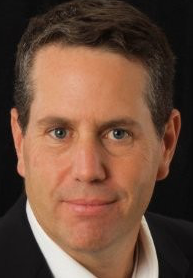
David Meyers
Founder & CEO
Gridtractor
profile
2:15 - 3:15 pm
Southern California Edison V2G Technical Advisory Board Update
Southern California Edison will present final findings from the SCE Vehicle to Grid Integration project on advancement of V2G AC standards and practice and DER management system integration and control through aggregation platforms. This project demonstrated application of the SAE J3072 V2G AC standard and UL 1741 SC standard practices connected to SCE's DERMS platform in alignment with generalized SCE Rule 21 interconnection practice. Conducted together with Stellantis, Eaton, and Kitu Systems, this project demonstrated physical V2G and V2H isolated functions. Together with dcbel, the project also demonstrated DERMS to V2G DC aggregation platform to DERMS connection and control. The V2G TAB's three working groups on Protocol Harmonization, Cybersecurity, and AC V2G standards will summarize their work to identify and help resolve immediate gaps to realizing widespread V2G capabilities benefiting both users and the grid.

Chair
Jordan Smith, P.E.
Consulting (Principal) Engineer, Grid Technology Innovation
Southern California Edison
profile
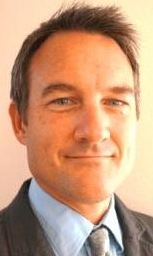
Joshua McDonald
Consulting Architect and Engineer
Southern California Edison
profile

Viswanath Ananth
Senior Technical Leader
EPRI
profile

John Holmes
Senior Principal Energy Advisor
American Honda Motor Co., Inc.
profile
3:15 - 3:30 pm
Coffee Break
3:30 - 4:50 pm
Interoperability Issues: Charging Interop and Smart Grid Interop - Both Vehicle and Charging Network Side
This session will focus on the challenge of "practical interoperability" rather than just getting standards developed and used for certification. We will discuss the process needed to get to an interoperable V2G ecosystem where any certified system can immediately interoperate with any other certified system (EV or EVSE). Topics to be examined include:
- What do we mean by interoperability? What are the role of standards, test specifications, conformance testing and interoperability testing? What does V2G interoperability mean?
- What is the state of the US standards for V2G with a focus on the implementation and certification of them rather than progress in finalizing/updating. This incorporates the test tools, certification programs and test labs.
- What is the state of international V2G interoperability from an EV-EVSE perspective?
- How do we tackle the end-end interoperability challenge? Getting EV-EVSE interoperability in practice addresses only part of the challenge. What needs to be put in place to standardize and test/certify the full scope of V2G communications and functional interoperability?
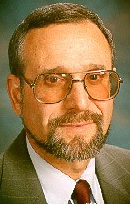
Chair
James Mater
Director of Strategy, Smart Grid
QualityLogic
profile

Bjoern Christensen
Task 53 NA Representative (Interoperability of Bidirectional Charging), IEA
CEO, Next-Dimension
profile

Tim Zgonena
Principal Engineer
UL
profile

Andrew Cifala
Solution Architect, Smart Grid & Alternative Energy Technology
Keysight Technologies
profile
4:50 - 5:00 pm
Concluding Comments

Lynn Ames is Head of Utility, Fleet, and Commercial Sales and Business Development at General Motors, following her successful tenure heading V2X Business Development Programs. Previously at Nuvve Corp, Lynn advanced through multiple leadership positions, including Vice President Partnerships, VP Infrastructure & Administration, and Director of Operations and Administration. She also has a background in sales, human resources, and finance at DockOnDockOn, Ethertronics, Rosser Marine & Charter Co (DOD), Netgain Financial, and CLARK Security Products.


Frances Bell has over fifteen years of experience growing early energy products into established, late-stage technologies. She uses her energy development work and her grid utility experience to bridge the gap between utilities and energy technology developers. Her current focus is on V2X (vehicle-to-everything) applications.


Brittany Blair is a Senior Analyst in Research and Industry Strategy at the Smart Electric Power Alliance (SEPA), where she contributes to advancing a net-zero carbon energy system. Since joining SEPA in June 2021, Brittany has supported research projects on managed and bidirectional electric vehicle charging, equity in transportation electrification, distribution resource planning, and microgrids. Her recent publications include "The State of Managed Charging in 2024" and "Advancing Building Electrification: Utility Case Studies." Prior to SEPA, Brittany interned at Newport Consulting, focusing on microgrid business models and net-metering tariff revisions. She holds an MS in Energy Systems Management from the University of San Francisco and both a BS and MS in Biotechnology from the University of Nevada, Reno. Brittany is passionate about environmental initiatives and enjoys hiking in the Lake Tahoe region and exploring botanical gardens.


Bjoern Christensen is the Managing Director of Next-Dimension, a consultancy company based in California. Next-Dimension focuses on promoting and scaling VGI/V2X technology worldwide. The company's goal is to collaborate with companies globally to scale VGI/V2X technology, ultimately reducing the cost of EVs, enabling more renewables, and providing energy resilience.
Over the past 14 years, Bjoern has been a leader in E-Mobility, Vehicle-Grid-Integration (VGI), as well as Vehicle-to-Everything/Grid (V2X/V2G). He held the position of Chief Strategy Officer (CSO) at Nuvve from 2011 to 2019.
While at Nuuve in 2017, Bjoern played a key role in securing EPIC funding for the INVENT Project (Intelligent Electric Vehicle Integration) at UCSD in San Diego. The primary objective of INVENT was to facilitate the adoption of commercial V2G (Vehicle-to-Grid) fleet deployments in California. The project received funding from the California Energy Commission. Following the successful funding acquisition, Bjoern assumed the role of principal investigator for the project.
Since his time at Nuvve, Bjoern has continued to be one of the key drivers worldwide of industry-defining projects and actual V2X commercial deployments. Since 2011, he has personally been involved in 13 industry-leading V2X and smart-grid projects and initiatives. These projects have been conducted across the globe in places such as Denmark, Sweden, Namibia (Africa - UNDP Headquarters as a showcase), Japan, India, as well as California and Delaware in the United States. Through these projects, Bjoern has gained unique insight, experience, and knowledge of what works, what doesn't, and how to scale the V2X transformation. Bjoern departed Nuuve in 2019 to establish his own consultancy company, focusing on VGI/V2X.
Prior to joining Nuvve, Bjoern had a long career at Siemens AG in Munich, Germany. During his time at Siemens, Bjoern held various roles and progressed through the ranks. In his final position, he was the Co-Founder, CEO, and President of Siemens Venture Capital, where he had global responsibility for Siemens' Corporate Venture investments.


Andrew Cifala currently serves as both a Strategic Portfolio Planner for Grid Modernization Technologies and a Solution Architect for Smart Grid & Alternative Energy Technology at Keysight Technologies, where he develops strategies and solutions to enhance grid infrastructure with alternative energy sources. His expertise is in power systems, particularly in the areas of renewable/alternative energy, microgrid/smart grid technology, and data center/server architecture. Previously, at Hewlett Packard Enterprise, he held roles as R&D Engineering Lead for Fuel Cell Integrated Power Systems and for Enterprise Server Power Supplies, managing multidisciplinary teams, defining hardware and software specifications, and contributing to invention disclosures, including a patent-pending rack-based regenerative hydrogen fuel cell design.
Earlier in his career, Andrew contributed as a Prototype/Project Engineer and Electrical Power Engineer at HP, worked on substation design as a Substation Design Engineer at POWER Engineers, and gained academic experience as a graduate teaching assistant at Montana State University, where he supported laboratory instruction in photovoltaic systems and circuit design. His special interests are in creating new concepts and ideas in technology, and strategizing, managing, and coordinating the process to bring them to fruition.


Eric Cutter is a partner at Energy & Environmental Economics, Inc., where he focuses on translating ambitious clean energy goals to rigorous load and DER adoption scenarios and cost-benefit analysis that can accelerate the local infrastructure investment needed for an equitable clean energy transition.
Recently Eric managed a $1.8 million PV integrated storage demonstration project for the Sacramento Municipal Utilities District and Sunverge, showing the untapped value that behind-the-meter storage can provide for local distribution grids. He also collaborated with E3's asset valuation practice to help numerous storage technology companies demonstrate their potential value to California utilities as the state transitions to a low-carbon grid.
He is currently working with utilities in California, New York, and the Pacific Northwest to assess the impact of electric vehicles on distribution system costs and to develop dynamic charging programs that better accommodate renewable generation under future high-renewables scenarios.
Prior to joining E3 in 2005, Eric worked as an independent water and energy resources consultant, and he was with Pacific Gas and Electric for 10 years working on regulatory policy for natural gas transportation and risk management for electric generation and procurement.


Tyler Davis has over ten years of experience in software engineering, specializing in building and scaling software platforms for energy optimization, EV fleet management, and hybrid power systems. At Synop, his work has included building integrations with utility data providers to collect rich grid signals for charging optimizations and operations. Previously, at Shyft, he built the company's software architecture from the ground up and scaled the engineering team to support product expansion. His experience also includes software engineering roles at Benable, Teespring, and HealthTap. He is dedicated to advancing sustainable energy practices and was selected as a Fellow at the Clean Energy Leadership Institute for his contributions to the field. Tyler holds a Bachelor's degree in Computer Science from Stanford University.


Mike Delaney is Vice President of Utility Partnerships & Innovation at Pacific Gas and Electric Company, where he leads programs and initiatives designed to accelerate California's clean energy transition. Prior to his current position, Michael held several senior roles at Consumers Energy, where he was responsible for setting gas and electric utility rates, negotiating regulatory settlements, and expanding non-capital utility earnings. He has also worked on major energy law revisions in Michigan at DTE Energy, shaping policies on deregulation, energy pricing, and incentive mechanisms. Michael holds a BSE in Engineering Physics and MPP from the University of Michigan, as well as an MS in Nuclear Engineering from MIT.


Mamadou Diong is the Manager of Electric Distribution Grid Planning at Dominion Energy, where he leads a team focused on Distributed Energy Resources interconnection and commissioning. With over 16 years of experience in the energy sector, including 14 years at Dominion Energy, he specializes in the installation and maintenance of IEDs for electric distribution systems. Diong is a Senior IEEE Member and serves as the Chair of the IEEE P1547 Working Group. He holds a Master's degree in Management Engineering.

Nick Fiore is Clean Transportation Innovation Manager at San Diego Gas & Electric. An experienced partnership and outreach leader with a demonstrated history of building and leveraging high-impact relationship, Nick has previously held key roles at EV Match, Unstoppable Domains, and the British Consulate General. With experience managing outreach for political campaigns, directing nonprofit initiatives, and serving as an adjunct professor, Nick brings a multidisciplinary approach to innovation and policy. He holds a Master of Science in Public Policy from the London School of Economics and a Bachelor of Arts in International Relations from Florida State University.


Steve Griffith, PMP, has over 25 years of experience in program and project management, specializing in strategic planning, risk management, and regulatory affairs. As the Executive Director of Regulatory & Industry Affairs, Mobility at the National Electrical Manufacturers Association (NEMA), he leads initiatives to advance electric mobility and grid resilience. With a background in engineering and extensive expertise in the defense sector, technology development, and change management, Steve has played a key role in shaping industry standards and policies. He holds a Bachelor of Science in Chemical Engineering from Clarkson University and has completed leadership training at The George Washington University.


Rudi Halbright is an Expert Product Manager and a lead subject matter expert on Vehicle-Grid Integration at Pacific Gas and Electric Company. At PG&E, Rudi leads the efforts to establish large-scale pilot programs that demonstrate the value of VGI for various stakeholders, including customers, utilities, regulators, and policymakers. He also manages the VGI emerging technology program, support the VGI regulatory activities, and develop analytical tools to help decision-making regarding the adoption of EVs and EV charging equipment. In addition, he leverages his skills and knowledge in information systems, process improvement, and new business development to create innovative and effective solutions for the VGI market. His mission is to build a path to programs that support V2X (vehicle-to-everything) and help increase the resiliency of the electric grid and decrease the dependence on fossil fuels.

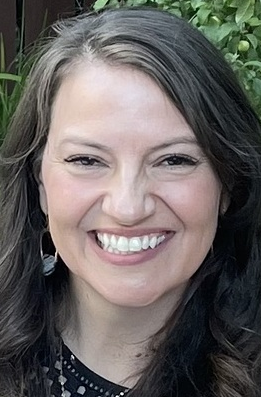
Alissa Harrington is a core member of the Automotive and Charging Partnerships team at WeaveGrid, a software company that provides utilities with a technology platform to actively optimize EV charging load, through greater understanding of customer behaviors and delivering on layered value streams for the grid. Prior to WeaveGrid, Alissa achieved significant milestones at BMW of North America, where she led the development and scaling of the largest OEM EV smart-charging product in the US and led on V2X topics. Alissa has also held roles in sustainable development advocacy, energy efficiency evaluation, and renewable energy research. Her experience underpins a strong understanding of the needs and challenges surrounding Vehicle-Grid Integration.


At Southern California Edison (SCE), Blake Heidenreich has spent the past five years working in the Electrification Department on the Strategy & Program Development team focused on Transportation Electrification. Blake currently contributes to SCE's VGI strategy and the coordination between teams that are impacted by the projected growth of EV and VGI adoption. He leads three initiatives aimed at the integration of EVs into current pilots or the development of new programs / rates that will support customer participation in both V1G and V2G. Collaboration externally with aggregators, EVSEs, and OEMs has helped inform internal efforts that builds upon industry capabilities to enable and incentivize VGI for SCE's customers.
Prior to VGI, Blake lead the development at SCE of a program that had funding approved for over $50M to support the installation of charging stations at New Construction Multi-family sites through SCE's Charge Ready Light Duty program. Projects while on the strategy team have also included the initial development phases of additional charging station programs, research on TE, and the exploration of electrification opportunities outside of TE.
Prior to joining SCE, Blake gained experiences at Deloitte Consulting, Google, and entrepreneurial endeavors in both finance and the non-profit sectors. Blake's first professional experience in the EV industry was during an internship at Tesla. As a loyal Wolverine, his alma mater from undergrad and grad school at the University of Michigan has lead to his joy of college football. Originally from Southeastern Michigan, Blake now lives in Southern California and pursues his greatest hobby of traveling when appreciating life outside of work.


Kelly Helfrich leads the growth of Resource Innovation's transportation electrification practice and the execution of EV consulting services and software products for utilities, transportation authorities, and government agencies across the US, Canada, and the UK. She has 12 years of experience in the EV industry, most recently with General Motors in 2016. While with GM, Kelly held various roles in electrification, leading the Maven EV program deploying Bolt EVs in rideshares across the U.S. and designing public charging infrastructure partnerships, developing and implementing home and public EV charging infrastructure strategies, and vehicle-grid-integration strategy and operations. Through these roles, she led partnership development, strategy, and product design and launch. Kelly began her work in the EV space with startup Evercar, a fleet electrification company that implemented a total cost-of-ownership EV lease utilizing the solar power purchase agreement model.


Kurt Johnson has over three decades of experience spanning government service, regulatory innovation, and renewable energy entrepreneurship. Currently the Community Energy Resilience Director at The Climate Center, where he has been driving local clean energy initiatives and resilience strategies since 2019, he has also headed renewable energy project development as Principal of Telluride Energy LLC. His career includes strategic roles in business development at Recurrent Energy and regulatory expertise at the California Public Utilities Commission, built on an 11-year tenure at the U.S. Environmental Protection Agency during which he founded the Green Power Partnership. He holds an MS in Environmental Sciences and Policy from Johns Hopkins University along with an MA and BA from Stanford University.


Anna Bella Korbatov is the Director of Regulatory Affairs at Fermata Energy, where she focuses on vehicle-grid integration and regulatory issues related to electric vehicles and energy systems. Previously, as a student consultant at Swiss Re, she examined how climate change and natural disasters can affect energy grid stability in the Pacific Northwest. She holds an MD in International Economics & Energy, Resources and Environment from John Hopkins SAIS, and a BD in political science from UC Berkeley.


Kristin Landry leads partnerships and establishes large-scale pilot programs as Pacific Gas and Electric's Expert Product Manager. Her prior experience includes over thirteen years of consulting and analytic roles at companies such as California Public Utilities Commission, Guidehouse, Navigant, and others. At Guidehouse and Navigant, she led efforts to develop novel analyses, ranging from behavior-based energy efficiency savings to first-of-its-kind models for calculating embedded energy savings in water conservation. As a Senior Regulatory Analyst at the California Public Utilities Commission, she streamlined interconnection processes for customer generation. Notably, she led the vehicle-grid integration work and drafted Resolution E-5165, establishing protocols for bidirectional electric vehicle charging that enhance grid reliability and cybersecurity.
Her consulting work with the Clean Energy Leadership Institute resulted in the creation of the Edict Internship Program, a strategic initiative that matched nearly 200 applicants with internships, successfully placing 35 BIPOC students in paid roles within the clean energy ecosystem.
Kristin holds a Master's degree in Environmental Engineering from Stanford University.


Jingjing Liu, P.E. is a Program Manager / Researcher in the Building Technology & Urban Systems Division at LBNL. She has 17 years of professional experience in promoting distributed energy resources. She currently serves as the Lead Program Manager of the California Load Flexibility Research and Development Hub, or "CalFlexHub" (calflexhub.lbl.gov), a $16M research project funded by CEC EPIC envisioning a future where flexible electrical loads (heat pumps, smart thermostats, water heaters, batteries, EVs, pool pumps) automatically respond to dynamic prices.


James Mater co-founded QualityLogic and is currently the director of strategy for QualityLogic's Smart Energy business. From 2001 to 2008, James oversaw QualityLogic as President and CEO. From 1994 to 1999, he founded and built Revision Labs, which merged with Genoa Technology to become QualityLogic. Prior to Revision Labs, James held product management roles at Tektronix, Floating Point Systems, Sidereal and Solar Division of International Harvester. He holds a bachelor's degree in physics from Reed College, Portland, OR and an MBA from the Wharton School, University of Pennsylvania.


David Meyers is Founder and CEO of Gridtractor, the first fleet electrification and charging services provider for agriculture. With a proven track record in the renewable energy sector, he has dedicated his career to empowering farmers to reduce emissions, achieve energy independence, and optimize operational efficiency. Prior to establishing Gridtractor, Meyers led Polaris Energy Services as CEO and President, driving significant advancements in energy management and sustainability. Based in California, Meyers continues to pioneer smart charging and vehicle-to-grid innovations that are setting new standards for zero-emission farming.


Shana Patadia has extensive experience working with fleet operators and software/hardware providers to integrate vehicles, chargers, and grid services and so accelerate fleet electrification. At ChargePoint, as Director of Emerging Technologies and Business Development, she oversaw EV fleet partnerships for ride-share, rental car, and autonomous vehicle programs, and also led the productization of ChargePoint's fleet charging software. In her subsequent role as Senior Director of Business Development at EV Realty, Patadia contributed to developing large-scale "grid-ready" charging hubs for commercial fleets. Now at Synop, Shana continues to help fleet-centric companies overcome infrastructure barriers and scale their electric vehicle operations, improving the charging ecosystem for themselves and their customers.


Jordan W. Smith is a Consulting Engineer for Grid Edge Innovation in SCE's Grid Technology Innovation organization. He has been evaluating advanced technology vehicles, energy storage, and charging infrastructure starting in 1996 in the founding and growth of SCE's EV Technical Center. In 2011, California adopted battery charger efficiency standards in its appliance code, based in part on prior work by Smith at SCE, work which later led to him to chair the SAE J2894 task force on EV charger power quality. In 2013 he developed and executed the SCE test plan which enabled interconnection of the first vehicle to grid systems in the L.A. Air Force Base V2G pilot - the first V2G aggregation to engage in the California ISO ancillary services market. Mr. Smith represents SCE in U.S. DRIVE, Driving Research and Innovation for Vehicle efficiency and Energy sustainability, Grid Integration Technical Team, the U.S. collaboration with the automobile industry, federal government, and electric utilities on vehicle-grid integration. Mr. Smith received a B.S. degree in mechanical engineering and an M.S. degree in engineering management from California State Polytechnic University and is a licensed professional engineer in California.

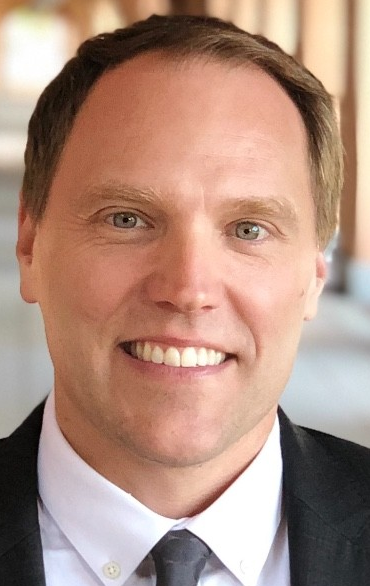
Russell Vare is a cleantech and automotive industry leader with over two decades of experience in EVs, charging infrastructure, and vehicle-grid integration. He has driven strategy, sales, and business development at companies ranging from global automakers like Nissan and Mercedes-Benz to innovative startups such as Nuvve and Kaluza. At Nissan, he contributed to the launch of the Nissan LEAF and led the company's first V2G initiative, while at Nuvve, he helped establish some of the first V2G school bus projects in the U.S. Now serving as VP of Vehicle Grid Integration at The Mobility House, Russell focuses on expanding energy services and EV optimization across North America. His expertise in EVs, energy storage, and renewable integration positions him as a driving force in the shift toward cleaner, more efficient transportation and energy systems.


Vincent Weyl is a growth leader and innovator with over 25 years of experience in product management, electrification, and smart charging solutions. As the Senior Vice President of Growth at IoTecha Corp, he has played a pivotal role in advancing the electric vehicle revolution by driving strategy, marketing, and partnerships for cutting-edge hardware and software solutions that enable seamless vehicle-grid integration. His expertise in cleantech, IoT, and business development has helped scale sustainable energy solutions globally. Vincent also serves as a Vehicle-Grid Integration Principal at the California Energy Commission and previously held leadership roles at CharIN e.V., Kitu Systems, and Nokia, where he spearheaded market innovation and ecosystem development. Passionate about fostering innovation, he excels in strategic leadership, partnership building, and delivering impactful solutions that drive industry transformation.


Zach Woogen is Executive Director at Vehicle-Grid Integration Council (VGIC), where he leads regulatory, policy, and market development efforts, covering rate and program design, interconnection rules and regulations, and managed charging and V2X technology in the leading VGI markets. Zach is also a Senior Manager at Strategen, supporting go-to-market strategy and market intelligence for clients and utilities in the V2X and smart charging space. Zach has a Bachelor of Science in Environmental Economics and Policy from the University of California, Berkeley.


Anuj Yadav is a senior consultant and project lead at Thomas Built Buses, a subsidiary of Daimler Truck. School Bus Fleet magazine recently named him as one of its "2024 Trailblazers", an award highlighting innovative professionals under the age of 40 in the student transportation industry.

Tim Zgonena is Principal Engineer for Distributed Energy Resources Equipment and Systems at Underwriters Laboratories Inc, where he has worked since 1990. Early in his career, Tim contributed to developing and refining UL's testing and certification processes for electrical equipment, with a strong focus on safety standards for photovoltaic systems and distributed energy resources. His work involved authoring and updating key standards such as UL 1741, which addresses the safety and interconnection requirements for inverters, converters, and related equipment. Currently Tim is responsible for overseeing the certification requirements for a wide range of products including photovoltaic modules, utility-interactive inverters, and wind turbines. Tim serves on several IEEE, NFPA and IEC Working Groups related to PV and Distributed General equipment.


Keyur Shah is Senior Manager of Global Charger Controls and Software at Heliox, where he oversees validation, interoperability, and system engineering, driving innovation in fast-charging technology. With a strong background in control algorithms, mechanical and electrical design, and system integration, Keyur holds multiple patents in charging technology and has led standardization efforts in the field. Prior to his current position, he was Engineering Technical Leader - Traction and Auxiliary System at Wabtec Corporation, and an Advanced Lead Controls Engineer at GE Transporation. Keyur is currently pursuing an MBA at the Georgia Tech Scheller College of Business.


Leah Brams is a dedicated advocate for sustainable transportation and energy solutions, currently serving as a Market Development Manager at Highland Electric Fleets. With a strong background in environmental studies, public policy, and chemistry from Dartmouth College, Leah has developed expertise in market research, policy analysis, and stakeholder engagement. Her work focuses on accelerating the transition to electrified transportation by navigating regulatory landscapes, managing consulting engagements, and identifying market opportunities.


Yoshinori Suzue is a Senior Manager at Nissan North America Inc., where he specializes in simulation, research, and energy solutions for electric vehicles. With over 16 years at Nissan Motor Co., Ltd. in Japan, he played a pivotal role in fuel cell stack development, modeling, and control. He also contributed to ICT policy development as an Assistant Manager at Japan's Ministry of Economy, Trade and Industry and conducted advanced research in fuel cell modeling as a Visiting Researcher at CEA in France. Yoshinori holds a Master's degree in Mechanical Engineering from The University of Tokyo.


Dr. Ahmad Faruqui an economist, has worked on a wide range of topics involving the efficient consumption of energy, including demand forecasting, demand-side management, distributed energy resources and the pricing of electricity. In his career, he has worked for utilities, governments, and legislative bodies on six continents and published more than a hundred articles. He was awarded a Lifestyle Excellence Award for his work on time-varying and dynamic tariffs by ESIG and identified as a Game Changer by AESP. He began his career at the California Energy Commission in 1978 and later worked at EPRI and at several consulting firms, most recently at The Brattle Group. He has been analyzing the demand for electric vehicles since the early eighties and started driving one in June 2019.


John Holmes has worked for the past 5 years as an Energy Advisor in Honda's Sustainability Business Development Division. Presently serving as Chair, he is in his third BOD term on the Vehicle Grid Integration Council, which Honda helped to found. His involvement in VGI spans three decades with tenures at AeroVironment, Vetronix, San Diego Gas & Electric and UC San Diego. He is an active Member of UL's Energy Council, served two BOD terms on the Energy Storage Association, several years as an Advisor to EPRI Utility Programs, contributed as a Peer Reviewer to DOE's Energy Storge Research, and as an advisor to the SEIA/SEPA Education Committee.


Joshua McDonald, a TOGAF certified enterprise architect and consulting engineer, has supported Southern California Edison (SCE) for the past 12 years focusing on enterprise system planning, architecture, strategy, and design, with an emphasis on smart grid, DER, and utility integration. He has extensive experience with PEV and smart inverter standards and supported many SCE DER demonstrations, deployments, and regulatory activities, as well as the development of IEEE, SAE, SunSpec and other standards. His current work is focused on SCE's DERMS implementation, DER integration, Vehicle to Grid, and Microgrids. Joshua has a Master of Science in Computer Science with a specialization in software engineering.


Viswanath Ananth is a Senior Technical Leader at EPRI with extensive experience in embedded systems, V2X communication, cybersecurity, and smart energy solutions. With a Ph.D. in Physics from Sri Sathya Sai Institute of Higher Learning, he has contributed to cutting-edge research in quantum electronics and photonics. His career spans over two decades, including roles in designing encryption systems, IoT solutions, and firmware for energy-efficient technologies. Viswanath has worked on standards development for EV infrastructure, embedded software, and cloud-connected devices, playing a key role in advancing secure and scalable technological solutions.


Kate Peters is an Energy Research Associate at The Brattle Group. She focuses on strategic planning and regulatory issues related to an increasingly decarbonized electric power system. She has supported utilities, renewable developers, research organizations, and technology companies in matters related to resource planning, capacity expansion modeling, electrification grid-impact studies, and the emerging role of virtual power plants (VPPs) in decarbonized markets.
Kate has contributed to high-profile studies assessing the economic viability of distributed energy resources, modeling the grid impacts of electrification, and evaluating the role of demand flexibility in mitigating peak load growth. Her recent consulting experience also includes estimating the cost-effective potential for grid flexibility in New York, assessing the market opportunity for VPP deployment in California, and modeling electrification scenarios to inform climate policy decisions in Maryland.
She additionally has expertise leading Brattle's in-house capacity expansion model, gridSIM, through engagements such as utility integrated resource planning and economic impact studies for generation resources. Her recent focus has been modeling highly decarbonized and electrified markets, to examine resource adequacy risks associated with cost effective future resource portfolios amid a range of weather conditions. Studies using gridSIM account for nuanced tradeoffs between investments in transmission, renewable technologies, and flexible demands. She holds a B.A. in Environmental Economics with a minor in Mathematics from Middlebury College.


Katie Peterson is the Project Implementation and Strategy Lead at The Mobility House, where she works at the intersection of electric mobility, distributed energy resources (DERs), and grid innovation. In her role, Katie leads cross-functional initiatives to integrate customer-owned DERs into energy programs while working with energy partners to develop a scalable deployment strategy. Prior to joining The Mobility House, Katie was a Utility Business Development Lead at GM Energy, where she partnered with utilities and energy market entities to design and launch market programs that leverage GM products. With a strong technical background in clean energy strategy and customer-centric program development, Katie brings a systems-level view to accelerating vehicle-grid integration.


Lydia Krefta is a dynamic leader in clean energy transportation, currently serving as the Director of Clean Energy Transportation at Pacific Gas and Electric Company. With over a decade of experience in the energy sector, she has spearheaded initiatives to accelerate electric vehicle adoption, regulatory compliance, and pilot programs aimed at sustainable transportation solutions. Prior to PG&E, Lydia held roles in engineering, logistics, and sustainability, including positions at Northrop Grumman and the Environmental Defense Fund. She earned her MBA from UCLA Anderson School of Management and a BS in Engineering Science from Penn State University. She has also served as Chairperson of the Board for the California Electric Transportation Coalition, driving policy and innovation in the EV space.


Michelle Bogen is a Project Manager on the Grid Services team at Ford Motor Company. In her role, she leads managed and bidirectional charging programs for residential Ford EV drivers in collaboration with electric utilities. In addition, Michelle works closely with Ford's Policy and Government Affairs organizations to support the advancement of vehicle-grid integration policies. Prior to Ford, Michelle worked at the intersection of transportation and energy, researching and piloting both VGI and stationary battery storage technologies at some of the industry's leading automotive and utility organizations. Throughout her career, she has gained a unique and broad perspective on the important role policy plays in technology enablement and customer adoption. Michelle holds a Bachelor of Science degree in Environmental Engineering from UC San Diego.


Sydney Hodges is currently a Client Program Manager at WeaveGrid, where she focuses on enabling the electrification of transportation. With a background in Chemical Engineering from the Massachusetts Institute of Technology, Sydney has gained extensive experience in various strategic roles, including as Director of Business Services at Liquid Instruments and Director of Customer Success at Xendee. Her career has spanned across industries, including engineering consulting at Woodside Energy and management consulting at Boston Consulting Group (BCG).


Dan Fletcher is an experienced tech entrepreneur and the Founder and Head of Ecosystems at dcbel, a company focused on the electrification of home and mobility energy solutions. With a deep commitment to advancing distributed energy systems, Dan works alongside solar, storage, and EV partners to create sustainable and innovative solutions for consumers. Dan started in 1993 as VP Sales & Marketing for Ozonics, FreshEdge, and Isofresh. In 2004, he became Managing Director of Green Canal Holdings, which specializes in framing energy technology demonstration projects. Dan also co-founded Atlantic Hydrogen Inc. that same year and served as VP Business Development. In 2014, Dan became the Head of Ecosystems for dcbel. Over the years, he has built extensive expertise in power electronics, inverters, and grid-connected technologies, helping to drive the energy transition forward. Dan holds a degree in Sustainable Development from Queen's University.


Dr. Nancy Ryan is Partner at eMobility Advisors. Her expertise combines high level government, corporate, and nonprofit experience crafting innovative public policies and regulations. She concentrates on strategic advice and economic analysis for utilities, OEMs, mobility companies, regulators, and investors throughout North America.
Nancy focuses on successful outcomes that define the role of governments, utilities, and third-party vendors in the complex and dynamic arena of EV infrastructure deployment through market assessment, cost benefit analysis, valuation of vehicle-grid integration, and tariff design for EV charging.
Nancy served as the lead commissioner formulating first-in-the-nation transportation electrification policies at the California Public Utilities Commission. She continued in the private sector at Energy & Environmental Economics (E3), founding the consultancy's transportation electrification practice.















































